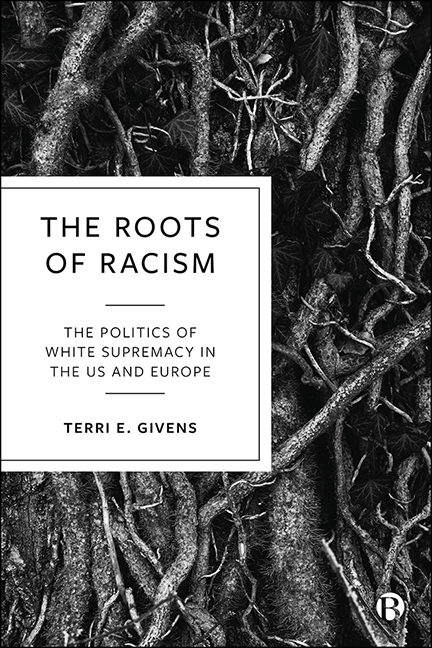Book contents
- Frontmatter
- Dedication
- Contents
- Preface
- 1 Introduction: Structural Racism is the Problem of the 21st Century
- 2 Political Science, International Relations, and the Normalization of White Supremacy
- 3 The Social and Geographical Construction of Race: A Transatlantic History
- 4 Ties that Bind: Slavery and Colonialism
- 5 Post-War Transitions: The Conflation of Immigration and Race
- 6 Immigration, Race, and Citizenship
- 7 From the Civil Rights Movement to Black Lives Matter
- 8 Party Politics, the Radical Right, and Race in the 21st Century
- 9 Elections, Protest, and Insurrection
- 10 Conclusion: Finding a Path Forward
- References
- Index
9 - Elections, Protest, and Insurrection
Published online by Cambridge University Press: 15 September 2022
- Frontmatter
- Dedication
- Contents
- Preface
- 1 Introduction: Structural Racism is the Problem of the 21st Century
- 2 Political Science, International Relations, and the Normalization of White Supremacy
- 3 The Social and Geographical Construction of Race: A Transatlantic History
- 4 Ties that Bind: Slavery and Colonialism
- 5 Post-War Transitions: The Conflation of Immigration and Race
- 6 Immigration, Race, and Citizenship
- 7 From the Civil Rights Movement to Black Lives Matter
- 8 Party Politics, the Radical Right, and Race in the 21st Century
- 9 Elections, Protest, and Insurrection
- 10 Conclusion: Finding a Path Forward
- References
- Index
Summary
“We can't breathe” – a cry heard around the world in the summer of 2020. One of the more egregious forms of discrimination against Black people on both sides of the Atlantic is police violence. In May of 2020 protests broke out around the world after the horrifying death of an African American man, George Floyd, in police custody in Minneapolis, Minnesota. Mr. Floyd had been apprehended after being accused of passing a counterfeit US$20 bill. It's not clear that he knew the bill was fake. Outrage came as a viral video of a policeman kneeling on Floyd's neck while he was asphyxiated flew around social media.
Although all four police officers involved in the murder were immediately fired, only one of them was arrested for murder a few days after the incident. Frustration with the situation only grew as a coroner's report tried to place blame for Floyd's death on underlying health conditions. This did not mollify community members who noted that Floyd was pleading for his life, telling the officer that he could not breathe and calling out for his mother.
The ensuing riots came in the wake of the COVID-19 pandemic, with many cities having been under shelter in place orders since mid-March. Given that African Americans were getting sick and dying at disproportionate rates, many in the community were frustrated with the lack of access to health care and the fact that many of those who were considered “essential” workers came from minority communities. That frustration played into the protests, and in some instances, violence that played out from London to Los Angeles.
It should be noted that much of the violence that ensued in the weeks after the death of George Floyd came from the police themselves. Dressed in riot gear and using rubber bullets and tear gas, the police in many cities were the instigators of violence. It is well known that policing in the US has a long history of systematic racism. In fact, some argue that the police were created in order to enforce racial codes and segregation from the time of slavery through the Jim Crow era.
- Type
- Chapter
- Information
- The Roots of RacismThe Politics of White Supremacy in the US and Europe, pp. 117 - 126Publisher: Bristol University PressPrint publication year: 2022



